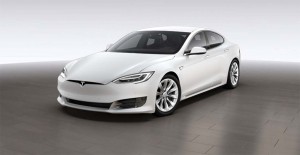Car insurance premiums are rising quickly, and when interest rates are also climbing, new vehicle buyers have a lot to consider when determining what kind of car they can afford.
The average monthly car payment is more than $500 now and insurance rates have jumped by more than a third between 2010 and 2016, according to the Insurance Institute for Highway Safety. Finding ways to cut those burdensome premiums should be a top priority for shoppers.
How much you pay for car insurance depends on a variety of factors, including age, driving record and location as well as the type of vehicle you want to buy.
There are a few other things you should know about how much it will cost to insure a vehicle. Odds are, the more expensive the vehicle is, the more it will cost to repair it in the event of a crash or theft. IIHS says that insurance companies make claim payments of roughly $900 on average per vehicle. Some vehicles get into more accidents, and some have higher payouts for each accident.
(Jackson stepping down as AutoNation CEO. Click Here for the story.)
So to find out what will cost you the most, the website 24/7 Wall St. found the 25 cars with the highest annual payouts. Many of the cars that are most expensive to insure are large or midsize luxury vehicles. Many of the cars that are the least expensive to insure are small to midsize SUVs.
Here they are:
- Tesla Model S
- Mercedes-Benz S class four-door LWB 2WD
- Mitsubishi Lancer 2WD
- Scion FR-S
- Dodge Charger 2WD
- Kia Optima hybrid
- Dodge Challenger
- Audi A7 four-door 4WD
- BMW 4 series two-door 2WD
- Lexus GS 350 four-door 2WD
- Ford Mustang two-door
- Scion iA
- Chrysler 200 2WD
- Scion tC
- Nissan Maxima
- Kia Rio
- Dodge Dart
- Infiniti Q50 four-door 4WD
- Land Rover Range Rover Sport four-door 4WD
- Audi A4 four-door 2WD
- Lexus IS 350 four-door 2WD
- Nissan Sentra
- Nissan Versa
- Mercedes-Benz C class four-door 2WD
- Kia Forte
As previously noted, the pricier the vehicle, more likely the pricier the insurance and close to half of the 25 on the list are luxury vehicle. The size of the vehicle appears to be a major determinant of insurance payouts.
“One of the truisms of the universe is that bigger and heavier is better from a safety perspective,” Russ Rader, IIHS spokesman said. “Many of the vehicles with low insurance claim payments are large and midsize SUVs. Such cars tend to have low personal injury, medical, and bodily injury insurance payouts, likely the result of being safer.
(To see more about Cadillac expanding its V-Series performance line-up, Click Here.)
Many of the vehicles with the highest overall average insurance payments are small to midsize sedans, which tend to protect drivers and passengers less than larger vehicles. “Looking at insurance loss data can help you not only zero in on the vehicles that are less costly to insure, but it can also help you compare the safety of vehicles in real-world driving,” Rader noted.

